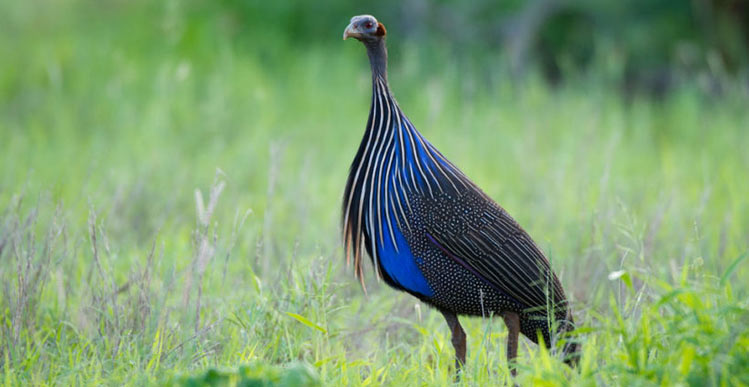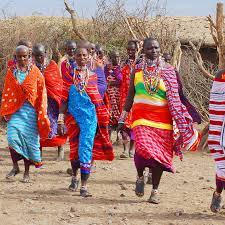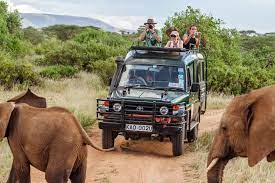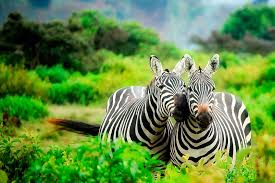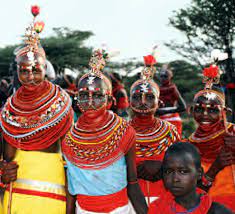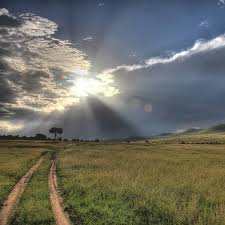Overview
The Mkomazi National Park is a magnificent, 3,500 square kilometre national park in northern Tanzania. Remote and initially inaccessible, it was established in 1951, but never attracted the financial support provided for the better known wildlife strongholds such as the Ngorongoro Conservation Area and the Serengeti National Parks. Only since 1989, when the Tanzanian Government re-examined the reserve’s status and designated it a National Priority Project, has its true significance and importance been recognized. Nowadays it is good accessible. From MamboViewPoint it is only one and a half hour drive to the Kivingo entrance. The Mkomazi National Park is a spectacular wilderness. Within sight to the northwest is Mount Kilimanjaro, Africa’s highest summit. To the south, the Pare and Usambara Mountains form a dramatic backdrop and, to the north, Kenya’s vast Tsavo National Park shares a border with Mkomazi, making common ground for migratory herds of elephant, oryx and zebra during the wet season. Together with Tsavo, it forms one of the largest and most important protected ecosystems on earth. Mkomazi is the southern tip of the Sahel zone. It is a classic dry-country reserve of grey-green nyika bush, ancient baobab trees and isolated rocky hills. Elsewhere, the seas of bush give way to open savannah woodlands of umbrella acacias and mbugas – shallow valleys of grassland.
The animals, too, are typical of the arid nyika. Giraffe, oryx, gerenuk, hartebeest, lesser kudu, eland, impala and Grant’s gazelle share the reserve with elephant, buffalo, and numerous predators, including lion, leopard and cheetah. In all, 78 species of mammals have been recorded. The birds of Mkomazi are even more numerous, with over 400 recorded species. Doves, hornbills, weavers and guinea-fowl are all present in large numbers – as well as such striking species as the martial eagle and violet wood-hoopoe.
Best Time to Visit
Northern circuit being its location, it is reachable via road, but is rather remote and inaccessible. A half of full day game drive is ideal after which you can go for Serengeti and Ngorongoro. To book safari tours to Mkomazi, contact us today!
Late June to October is the prime time for watching wildlife in Mkomazi National Park. It is the Dry season and at this time animals are more easily seen because vegetation is thinner, and wildlife gathers around rivers and waterholes. However, the general scenery and mountain views tend to be better in the Wet season from November to May.
Best Time June to October (Animals are more easily found)
High Season This park doesn’t really have a high season as it gets very few visitors
Low Season March to May
Best Weather June to October (Little rainfall)
Worst Weather March, April (Peak of Wet season)
June to October –Dry Season
Wildlife stays near to water sources and vegetation thins out making animals easier to spot
Sun-filled days with little chance of rain
Mosquitoes are fewer, so catching malaria is less of a risk
It tends to be hazy, and the surrounding mountains are less visible
Getting There
Philip is a renowned Africa expert and author of many Bradt guidebooks to African destinations, including the guide to Tanzania.
The best way to get to Mkomazi is by road from the town of Moshi or Arusha. The best option to get there is to fly into Kilimanjaro International Airport (JRO), which is situated halfway between Arusha and Moshi and about 30km/19mi from Moshi. It is also possible to fly into Dar es Salaam and use a domestic flight to get to Arusha Airport (ARK) or Kilimanjaro International Airport (JRO). In most cases, your tour operator will pick you up from the airport. Mkomazi is right next to the small town of Same, which is a comfortable 112km/ 69mi drive south from Moshi. Mkomazi lies a bit out of the way as compared to the other parks in northern Tanzania but could be visited en route to the Usambara Mountains. Charter flights to Mkomazi’s airstrip are also an option and depart from Arusha or Dar es Salaam.
Activities
- Intro
- Wildlife Watching
- Birdwatching
- Walking Safaris
Wildlife Watching
Animals that you’re likely to spot include oryx, eland, dik-dik, the rarely seen gerenuk, kudu and Coke’s hartebeest. The huge seasonal elephant herds that once crossed regularly between Tsavo and Mkomazi are beginning to come back, after reaching a low point of just a dozen elephants in the area in 1989, although elephants still are not commonly spotted in Mkomazi.
Birdwatching
With more than 400 species, Mkomazi is a birder’s delight. Species to watch for include various weaver birds, secretary birds, crowned and bateleur eagles, helmeted guinea fowl, various hornbills, storks and the pygmy falcon. Guided bush walks can be arranged at Zange entry gate or with Babu’s Camp.
Uniqueness
A lesser known park perched in the famous Tanzanian northern circuit, Mkomazi is a birding and wildlife paradise teeming with wild animals and avian species. The Mkomazi project which was created in 1989 focuses on the restoration and reintroduction of endangered species of Africa into the park, and to save the territory from continuous poaching, and illegal hunting. It is a continuation of the Tsavo West National Park of Kenya, which is one of the prominent parks in the country. Thus much of the park’s characteristics remain the same in Mkomazi. This piece of wilderness offers the most stunning all round scenery. To the northwest, there is the snow capped peaks of Mount Kilimanjaro, and to the south, there is Pare and Usambara Mountains. To the north, there is Tsavo West. Together with Tsavo, Mkomazi forms a unique ecosystem which protects an array of precious wild animals.

